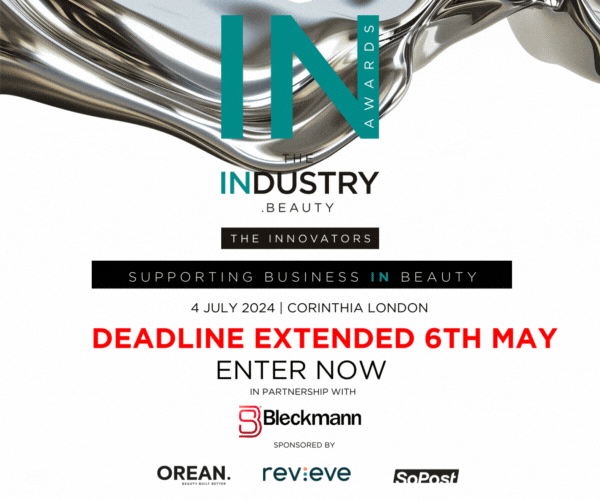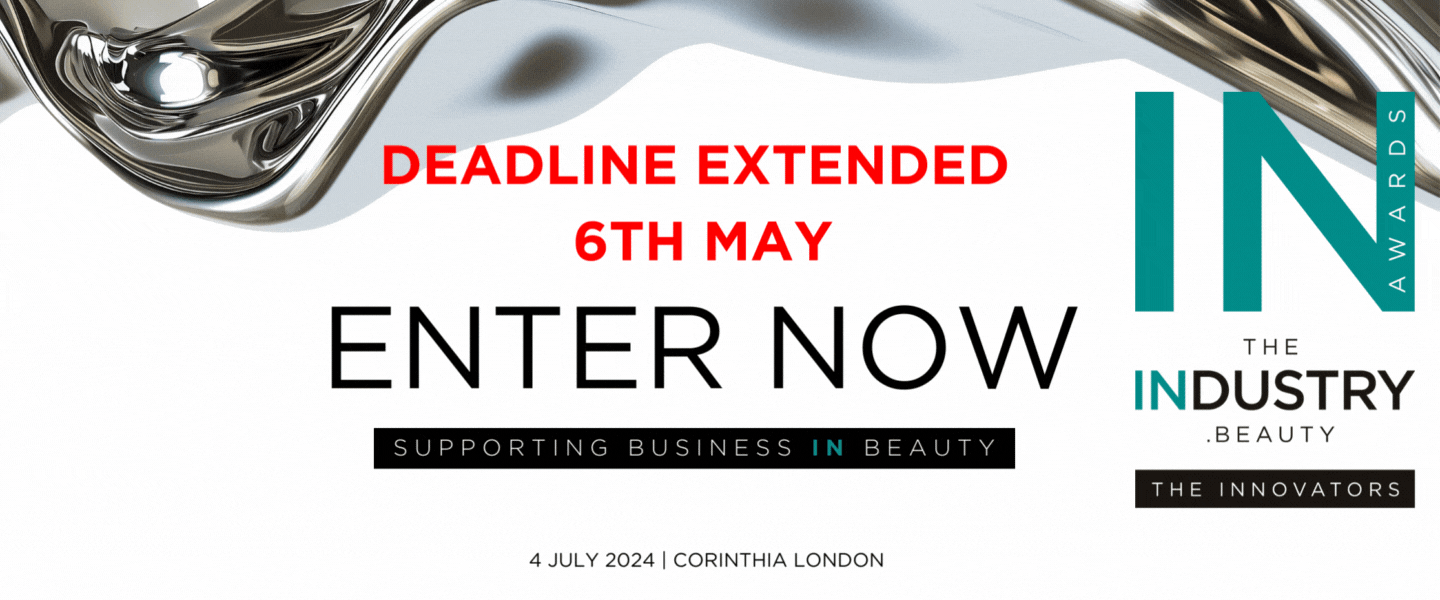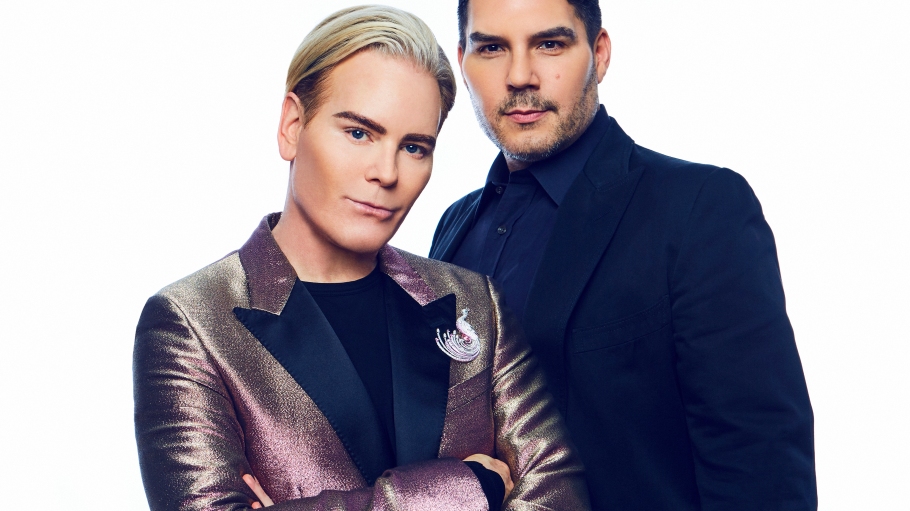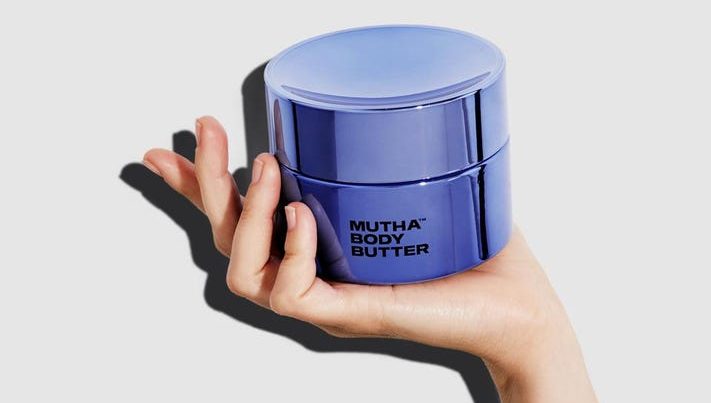Plastic Free July 2023: Beauty leaders on finding a solution to plastic pollution
To celebrate Plastic Free July, TheIndustry.beauty spoke to a variety of beauty business leaders about plastic in the beauty industry, the material alternatives they're using, and what advice they would give to businesses looking to reduce their use of plastic or go plastic free.
Plastic free beauty businesses

Brianne West, Founder of Ethique
How is Ethique plastic free?
Ethique makes your favourite beauty products in solid bar format. From shampoo and conditioner to facial cleanser, we formulate our products without added water so we can do away with the wasteful plastic bottle. Instead, our bars are packaged in home-compostable cardboard that’s designed to disappear. When you’re done with it, you can pop the whole package in your compost bin or bury it in garden soil, where it will break down into components that other things will use to grow.
How is being a plastic-free beauty brand beneficial?
Knowing how little plastic is actually recycled, using recyclable plastic is clearly not enough to turn the tide on plastic pollution and climate change. By contrast, home-compostable packaging like the boxes and tubes we use at Ethique can reduce the amount of plastic being produced and subsequently sent to landfill – in fact, we’ve saved 28 million plastic bottles so far.
There’s a perception within the business world that behaving sustainably inevitably represents a cost to their business, one which erodes profit margins. But a genuine commitment to sustainability – including but not limited to plastic-free packaging – can actually be a huge opportunity for a business.
What advice would you give to businesses looking to reduce their use of plastic or go plastic free?
Don’t try to tackle too many things at once. Start by looking at where plastic is used across your whole business, from ingredients and raw materials, to packaging and marketing materials, and the supplies you use in your office. Once you understand what’s being used where, make a phased plan of how you want to eliminate or reduce it, and work on one or two things at a time. Start with the easiest thing first and work from there. Each ‘win’ will give you the know-how and confidence to tackle the next bit and so on.
It’s easy to become overwhelmed when trying to do it all and immediately become ‘plastic free’- if you cut it into manageable parts, you’ll achieve more.

Ed Currie, Co-founder of AKT
How is AKT plastic free?
AKT is 100% plastic-free and recyclable. We use aluminium tubes and bespoke aluminium caps, which are infinitely recyclable. We don't even use plastic tape on our shipping boxes, or use plastic filling to protect our goods.
We also go a step further and request that our suppliers avoid plastics too when sending over components like tubes, cartons — even our Assistant Tools.
How is being a plastic-free beauty brand beneficial?
For us, the reason we're plastic free is a matter for our conscience. When we started the business, the plastic crisis was at the forefront of everyone's minds after Blue Planet aired. We decided, perhaps naively, that we didn't want to use any plastics. It made the road to launch 100 times more difficult and more expensive, but it was something we were determined to achieve. We kept saying "if they can build a rocket to take people into space, we can find plastic alternatives for our packaging".
It's important to set a precedent. It says to the multinational conglomerates, "hey, we are a tiny brand and we've figured it out, so you can too!" It's despicable that profits always come before anything else. You can't enjoy your profits if there isn't a planet left.
What advice would you give to businesses looking to reduce their use of plastic or go plastic free?
It's possible. You just need to make the effort and change people's minds about quick convenience. Sometimes taking your time is part of the ritual of using the product. It can be a terrific USP.

Ben Grace, Founder of SBTRCT
How is SBTRCT plastic free?
At SBTRCT, we create solid bars of cleansers, balms and serums for people who want to reduce their environmental impact, without compromising on great skin. It is this solid format that negates the need for any plastic packaging. Instead of plastic, our products are housed in certified domestically compostable carton board. Our customers can either pop the packaging in their compost bin at home or easily put it in curb side recycling.
How is being a plastic-free beauty brand beneficial?
Our obsession with being plastic free is what led us to our solid state format which, in many ways, is our superpower. It is this that has driven our innovation, creating two world firsts - the world’s first solid plastic free retinoid and the world’s first solid vitamin C serum.
Rejecting plastic has also enabled us to build a business that not only has an impact (SBTRCT was recently certified B Corp), but which also delivers better products that are great value for our customers (our bars typically last twice as long as traditional format equivalents).
What advice would you give to businesses looking to reduce their use of plastic or go plastic free?
I would say that the goal has to be 100% plastic free. Forget reducing or being “single-use plastic free”. Nothing else will do, and five year or ten year timelines to achieve this just won’t cut it.
I would also say cast the net far and wide, looking beyond the beauty industry, when exploring packaging innovations. A good example of this is our carton board. This was actually developed for the catering industry. When we found it, the compostable properties and cellulose coating made it ideal for our purposes.
Finally I would say stay true to your vision. Being 100% plastic free is not the easiest way to build a skincare business, but it is without a doubt the most rewarding, worthwhile and the future of the industry.
Beauty businesses reducing plastic use

Elmar Mussenbrock, Director of Sustainability at Kao Salon Division
How is Kao reducing its plastic use?
At Kao, we have been working on reducing plastic for many years. It’s an integral part of our global ESG strategy and one of the major action points of our Zero Waste commitment. Through this we aim to achieve net zero plastic packaging waste by 2040, and negative waste by 2050, and have defined key milestones in a plastic packaging roadmap, outlining our strategies and actions to support circularity.
To achieve this, we are focusing both on the reduction of plastic packaging used and increasing our recycling initiatives. When it comes to packaging reduction, our work includes making containers and packaging thinner, redesigning packaging of existing products to contain less plastic, increasing package capacity and making products more concentrated, and using thinner film packaging for primary containers. Refill packaging formats have also been established in Kao’s home market Japan for many years already, however they are becoming more present in western regions.
Why is Kao reducing its plastic use? Why is this important?
As a consumer goods company we recognise our responsibility to reduce waste, and lowering our plastic use can make a big difference. Reduction is the key focus of our Zero Waste efforts. But it is not just about us as a company; by offering products that require less plastic use, we are also enabling our consumers to live more sustainably and are contributing to habitual changes across society.
Driving change across and beyond the industry is also something we focus on in recycling. Increasing the use of recycled material in our packaging and implementing design for recycling guidelines are a major part of our efforts in this area. At the same time, we are working on new recycling technologies, and as the world’s first company to do so, have recently applied a new film-to-film recycling technology to transform used refill packs into new refill packs. On a global level, we’re also working with partners to collect used plastic to be recycled and turned into pellets that can be used for new packaging.
We hope others can follow suit, but believe that it takes all of us, manufacturers, retailers, and consumers, to work together to support a sustainable society and drive long lasting change.
What advice would you give to businesses looking to reduce their use of plastic or go plastic-free?
A very important part of any strategy, or measures created to lower the ecological impact, is thorough analysis of the product lifecycle. Reducing plastic is essential, but alternatives may also turn out to have a bigger overall footprint, due to energy consumption or transport. Knowing your areas of impact is the first step to identifying action for improvement.
Once these are defined, a clear roadmap including specific and realistic goals, milestones and action points is essential to inform business strategies. Implementing reduction measures on a short and long-term basis also helps streamlining processes, and makes teams work towards a shared goal.
Fully deploying this strategy across the business and embedding it into the everyday work of the organisation is vital. Having employees and business partners onboard to support the roadmap, realigning steps where needed, and addressing potential challenges along the way are important to tackle plastic reduction and environmental issues in the long run.

Barbara Colombo, UK and Ireland Sustainability Director at L’Oréal
How is L’Oréal reducing its plastic use?
L’Oréal has been on a sustainability journey for over 40 years and we are proud of the progress we’ve made to date, particularly around our exciting packaging innovations. Our dedicated sustainability programme, L’Oréal for the Future, seeks to transform our business to respect the planet’s limits.
One key commitment for us is around our product packaging, where we have committed that 100% of the plastic used in our packaging to be either from recycled or biobased sources. Since 2007, we have implemented a packaging policy based on "Reduce, Replace, Recycle", which has resulted in 96% of our new or renovated products having an improved environmental profile in 2021.
We also know the importance of using our scale to collaborate across industry to ensure we can all work together to help solve one of today’s most pressing environmental issues. Partnerships s are an exciting indication of what the industry has the potential to achieve if we are all open to collaboration.
Why is L’Oréal reducing its plastic use? Why is this important?
For over 15 years, L’Oréal has been working on an ambitious sustainable transformation of our packaging, spanning everything from product design to recycling of packaging after use. As part of this research into the lifecycle of our products, we found that on average, 50% of the environmental footprint of a product is linked to its packaging. Plastic pollution remains a major environmental challenge, and we believe that we have a role to play by innovating the types of packaging we provide, the way it is used – with a focus on more circular use - and the materials it contains.
What advice would you give to businesses looking to reduce their use of plastic or go plastic free?
I believe that for any sustainability commitment to succeed, a shared ambition must be felt across the entire business. Plastic reduction can’t be the responsibility of one individual or one function, it needs to be a collective effort where progress is tracked and measured. Teams need to feel empowered to challenge everyday business practices, and so it’s important to upskill employees across the business with sustainability training, something we have implemented at L’Oréal.
I would encourage businesses to think holistically too, as it isn’t all about the product itself, we can look at areas such as supply chain and map how plastic is being used in transit for example. There are many opportunities to have a positive impact.
I also believe it is pivotal that companies play a role in empowering consumers on how to adopt more sustainable habits and how to reduce their individual environmental footprint, so that collectively we can all work to have a greater positive impact.

Alec Mills, Co-founder of DAME
How is DAME reducing its plastic use?
DAME was explicitly founded to tackle the vast plastic waste coming from the femcare industry. We launched the world’s first Reusable Tampon Applicator on Kickstarter in 2018 alongside our plastic free organic cotton tampons (even the wrappers are compostable cellulose). Although our applicator is made from plastic, it’s a medical grade self-sanitising polymer - making it really easy to use and clean - and it lasts 10 years. Each one also saves up to 12,000 single use plastic applicators going to landfill. And unlike disposables, ours is recyclable at the end of its life.
Our customers then requested Reusable Period Pads, so we developed a patent-pending pad. In addition, we’ve recently developed Period Pants, containing freshMNT technology (developed by Patagonia) and the DAME Period Cup made from self-sanitising polymers - the first menstrual cup on the market that doesn’t require boiling to clean.
Why is DAME reducing its plastic use? Why is this important?
Half the people on the planet will have periods and we estimate around 100 billion plastic period products get thrown away each year. So, the first challenge is to reduce the plastic within the products themselves.
The second challenge is to educate and change habits. The average tampon user throws away 12,000 tampons in their lifetime, and in a best case scenario, they go to landfill where they last 500 years. But 1.3 million plastic period products are flushed down the loo every day, many ending up on UK beaches and overseas.
Change is important, as more people worldwide get better access to essential period products, we need to work to make them sustainable and to encourage good behaviours .
What advice would you give to businesses looking to reduce their use of plastic or go plastic free?
The first thing to do is identify where there is plastic in the value chain, a plastic audit if you like. Then, the real task is to ask some hard questions about the role that plastic plays. You must start by identifying where plastic is present with no role, and working out how to remove that - there should be no impact to your product, or consumer experience.
Where plastic is performing a role, you should explore whether other materials may be able to replace that plastic and perform at similar or even improved levels. Ideally, all replacement materials will be multiple use and or biodegradable at a minimum. Next, if plastic is necessary, as it is in some of our products, the challenge is to make sure that it is able to play its role repeatedly. How can you make single-use products multi-use?
Finally, no matter what, ensure that at the end of their life, your plastic products can be disposed of appropriately. Ideally they should be biodegradable, if not, provide your customers with recycling instructions, or even better, take those products back into a circular system and ensure they do not go to landfill.






